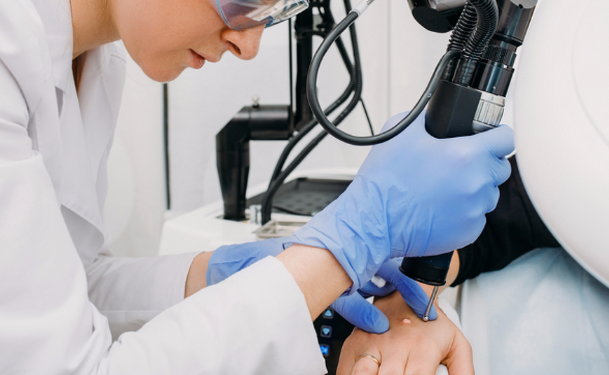The cosmetic laser therapy known as profractional resurfacing is a modern innovation in dermatology treatment. Lots of people are looking at getting these kinds of procedures to treat a range of skin conditions including acne, sun damage and signs of aging. Generally, profractional resurfacing can make skin look younger and erase wrinkles and fine lines on parts of the face.
Every kind of cosmetic dermatology treatment has its own benefits and disadvantages. Here are some of the pros and cons of profractional resurfacing as reported by doctors and patients.
Advantage: No Cutting or Injections
Profractional resurfacing is not an invasive procedure. The laser uses heat energy to stimulate collagen below the skin. For many patients, the relative safety of this process appeals to their sense of appropriate cosmetic treatment, where needles and scalpels indicate a whole new level.
Advantage: Less Recovery Time
In general, those who receive profractional resurfacing treatment can be back to work or back to their regular schedules a day after getting the laser therapy. In contrast, dermal fillers and facial implants require longer recovery times.
Advantage: Versatile Treatment??
Profractional resurfacing can be combined with other different kinds of cosmetic dermatology fixes aimed at different parts of the face. Advising doctors will often go with a ?mix and match? strategy to get the best solutions for particular goals on each feature of a patient's face.
Advantage: Few Side Effects
Because the disturbances that the profractional resurfacing laser creates are relatively minimal, not a lot of patients report significant side effects with profractional resurfacing. However, some side effects and complications do apply, especially depending on existing medical conditions such as scarring, infection or immune problems. Be sure to ask your doctor about all of the risks before going ahead with this treatment.
Disadvantage: Cost
A profractional resurfacing treatment can range from several hundred dollars to several thousand. Patients often get 2-3 sessions, raising the costs of this laser therapy. A general average cost of profractional resurfacing is around $1000. Since health insurance companies don't typically pay for profractional resurfacing, cost is a common factor in making individuals reluctant to get this work done.
Disadvantage: Slow Going
Although some doctors say you will see immediate results with profractional resurfacing, the reality is not always that simple. This kind of laser treatment is less aggressive than some other kinds of treatment, and it may take a while to really get the results you're looking for. Unlike facial implants, profractional resurfacing is not a concrete altering of the facial structure, but a ?suggestion? to subdermal cell tissues to generate some changes.
Disadvantage: Multiple Sessions
Some patients who have not had good results might want to quit after one profractional resurfacing laser session. Getting the right cosmetic results for skin can be hard work. Keep in consultation with your doctor about any concerns or issues during treatment.
The above represents some common pros and cons of this kind of laser therapy.


